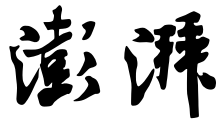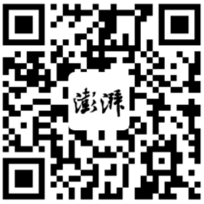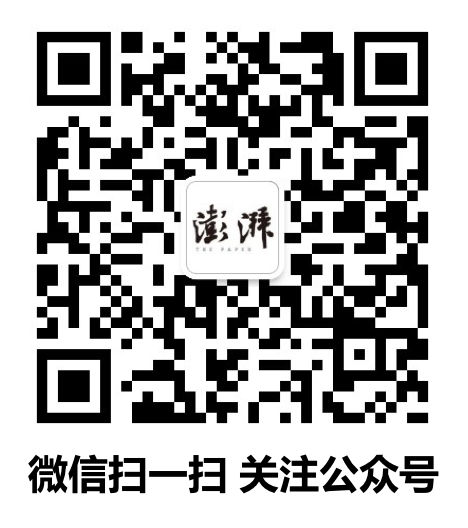- 50
- +15
致澎友|黄金大米项目负责人:为什么要在中国推广黄金大米?
【编者按】
黄金大米在中国引发过较大关注。2008年6月,一支由中美科学家组成的科研团队在湖南衡阳的一所小学进行了相关实验,25名小学生在未告知黄金大米转基因的情况下,食用了黄金大米。2012年8月,该研究被国际环保组织绿色和平曝光,引发社会关注。中国疾控中心经调查发现,实验存在违规之处,这引发了民众对转基因、黄金大米安全性的进一步疑虑。
2014年10月,在中国科学院与美国科学院共同主办的“全球转基因农作物发展现状和未来展望国际研讨会”上,来自10个国家的18名全球生物技术研发领域的专家出席了会议,并发表了关于转基因达成的8点共识,其中包括用于特定作物改良的转基因方法对人和动物没有任何负面影响、黄金大米是营养加强的转基因作物,对维生素A缺乏症提供了一种干预方法等。
10月24日,澎湃新闻(www.thepaper.cn)在上海采访了参加会议的黄金大米人道主义委员会执行秘书、黄金大米工程负责人Adrian Dubock博士,并在此后半个月里,就一些技术问题以及观点对其进行了邮件采访,现将其对黄金大米、转基因技术的介绍以及对一些反转基因组织的评价以来信的方式展示。英文原文附于文末。

维生素A缺乏症是儿童失明的主要原因,每年全球有近50万儿童受此困扰,如果在之后的一年里状况没有好转,其中一半的儿童会因此死亡。更重要的是,最近20年的研究发现,VAD是一种营养获得性免疫缺陷综合症。患有VAD的儿童或孕妇免疫力会减弱,难以抵抗疾病,一些对正常人而言常见的疾病对于VAD患者可能是致命的。充足的维生素A能预防全球范围内23% - 34%的5岁以下儿童的死亡率以及40%的孕妇死亡率。
在中国的城市和农村,VAD同样常见。2004年,3-12岁中国儿童维生素A缺乏率为9.3%,其中城市为3.0%,农村为11.2%。中国维生素A边缘缺乏率为45%,其中城市为29%,农村为50%。2006年的一项调查显示,VAD在中国6岁以下儿童的感染率为12.2%,其中严重缺乏维生素A的比率为0.5%。那些住在贫困山区、母亲受教育程度低、少数民族的儿童患VAD的风险更大。在回顾2005年之前10年的数据后,WHO于2009年的一份报告称,VAD是中国孕妇面临的一个极其严重的公共安全问题。
只有动物和人能够合成维生素A。一份理想的营养均衡的膳食包括肉类、奶类以及果蔬类。植物中有色部分中的化学成分能被人体用于合成维生素A,而从动物类食物中,人体可以直接摄取维生素A。但不是每个人都能吃得起肉,而一般来说,人体从植物中提炼维生素A的效率较低。一个1~3岁的儿童每天需要8份深色绿叶蔬菜才能达到维生素A的推荐膳食供给量,鉴于食用植物合成维生素A的效率如此之低,那些贫困儿童难以通过蔬果的摄入补充足够的维生素A。
1990年代初期维生素A胶囊被发明,可以一年两次为维生素A缺乏的地区居民提供补充,但VAD最直接的受害者:儿童,却不是胶囊补给的受益者。因为担忧可能的毒性,这些胶囊不会给儿童食用。此外,这些胶囊需要付费购买,将其运输过去也需要费用,并联系相关人员。
在当时,普及维生素A胶囊也是有争议的事情。但不管怎样,这种胶囊在过去25年间挽救了成千上万人的生命。然而,上述其面临的困境使其难以持续,这导致VAD每天仍能夺取6000多儿童的生命,这个问题需要联合国或相关国家用下一个25年来解决。
VAD通常与贫困有关,尤其是过度依赖碳水化合物,其不含有能在人体内转化为维生素A的有色物质。一个典型的例子是大米,大米是很好的能量来源,但不含维生素A或铁等微量元素,在一些以大米为主食的地区,大米能占日常饮食的80%以上。此外,大米也一直是最便宜的食物。
黄金大米是第一个有针对性的设计出的食品,用以对抗VAD,其原理是往水稻里插入一段从玉米中提取出的基因。黄金大米被食用后能在人体内转变为维生素A,其实可以将其称为最终的“有机作物”,因为水稻本身成为了维生素A的前体:β-胡萝卜素的来源,这一成分不仅只是在水稻的叶子中,而同样在水稻的谷子里,在食用部分里。
2004年,在英国的一个实验室里,研究者用转基因技术成功创造了黄金大米。此后,黄金大米的培育均是通过传统育种手段来实现。研发人员已经捐赠了这一技术,供各国政府利用。黄金大米项目是非营利的,没有一个人,也没有一个组织,会因为推广黄金大米而从中牟利。
2001年时,长期反对转基因技术的国际环保组织绿色和平组织声称,乳母食用18公斤烹饪好的黄金大米(相当于6.3公斤干重的大米)才能补充足够的维生素A。这是一派胡言。首先,当时研究才刚刚开始,要食用多少才能补充足够没人能知道;其次,合理的估计(事后也得到证实)显示黄金大米可以成为维生素A的有效来源。
随后黄金大米进入了实验阶段,先在美国用成人参与实验,后在中国用儿童参与实验。在中国的实验是由汤光文博士和她的合作者操作的,汤光文本人是华裔。这一实验在2003年就精心策划好了,于2008年完成。与普通大米相比,黄金大米唯一的不同是多了β-胡萝卜素。食物中(包括黄金大米)所含的β-胡萝卜素的剂量对人体是安全的,而如果人体过量摄入,也不会转变为更多的维生素A,而是会将其排出。
2008年在湖南衡阳的黄金大米实验并不是安全性实验,其安全性实验早已在美国完成。涉及人体的实验,尤其是涉及到儿童,不管是在美国、中国还是其他国家,都是被严格控制的。
这项研究用了非常巧妙的办法来分析β-胡萝卜素转化为维生素A的效率,其利用的是一小份血样。研究结果很令人满意:“就β-胡萝卜素转化效率而言,黄金大米比食用油、菠菜更高,一碗100~150克烹饪过的黄金大米(50克干重)可以提供给6~8岁的中国儿童60%的推荐摄入量”,“在补充维生素A上,在以大米为主食的区域,黄金大米能起到和肉蛋果蔬一样的效果”。这些评语均引自汤光文发表于2012年8月的论文。显然,2001年时绿色和平关于食用量的说法是错的。此外,绿色和平出于反对一切转基因的目的,还诋毁2008年衡阳实验杰出的实验结果,这一结果由汤光文及其合作研究者与一些中国家庭合作得出。
2012年8月30日,绿色和平组织在中国发布了一份通稿,这份通稿是从远在德国的计算机服务器发出的,这份通稿称“这一实验不可能没有违反科学和医学伦理,而且还欺骗中国政府称其叫停了研究”。这一新闻稿误导了中国民众。从实验结束的2008年到2012年间,绿色和平没有一点动作,倒是在2年之后突然质疑,让受试儿童及其家长开始担忧。他们的担忧又与媒体或社交媒体的关注呼应,最后使得这个议题在微博上火了好几周。
事实上,只有三分之一的受试儿童吃过黄金大米,并且只吃过一次。其食用的黄金大米含有的β-胡萝卜素约等于一小块胡萝卜。
因此不难理解,英国环境、食品与农业事务部国务大臣Owen Paterson将绿色和平组织反对黄金大米的行为称之为“邪恶”。此外,绿色和平组织的联合创始人Patrick Moore后来在1970年代离开了这一组织,如今他将该组织反对黄金大米的行为视为“反人类罪”。有个网站(www.allowgoldenricenow.org)在讲这个事情,你们可以去看看。
Letter from Dr.Adrian Dubock
According to the data of World Health Organisation, VAD is very common, it affects 250 million children globally, and a significant number of pregnant women too.
Vitamin A deficiency is the leading cause of childhood blindness globally, with up to half a million children affected each year, or which half of them die within 12 months if the condition is not treated. Even more important, and only recognised in the last 20 years, is that vitamin A deficiency is a nutritionally acquired immune deficiency syndrome. Children and mothers with insufficient vitamin A in their diets lose the protection of their normal immune defences against common or uncommon diseases. Diseases which should be survivable in well-nourished people become lethal. A universal source of vitamin A will prevent 23 – 34% of total under 5 years’ child mortality globally, and up to 40% maternal mortality.
Vitamin A deficiency in China
Vitamin A deficiency is a common nutritional problem in China among the urban and rural populations. In 2004, the prevalence of vitamin deficiency among children of 3 to 12 years old was 9.3%: in the urban areas 3.0% and in rural areas 11.2%. The prevalence of marginal vitamin A deficiency was 45% of the whole population: with 29% in urban and 50% in rural areas. A 2006 survey found VAD affecting 12.2% of Chinese children 0 – 6 years, and severe VAD afflicting 0.5% of the same age group. Chinese children living in the poor western area having a mother with either poor education or of minority ethnicity have a high risk of VAD. Reviewing a decade’s data up to 2005, the World Health Organisation in 2009 reported that vitamin A deficiency was a severe public health problem for pregnant women in China.
Only animals and humans can make vitamin A. A balanced diet including animal products such as eggs, milk, butter, cheese and liver as well as coloured fruits and vegetables is ideal. The human body makes vitamin A from the chemicals in the coloured parts of plants we eat. Animal products eaten by humans provide actual vitamin A. But many people cannot afford to eat animal products. Normally the conversion efficiency from plants sources of vitamin A is very poor too.
“A young child between ages one year and three would need to eat eight servings of dark green leafy vegetables per day in order to meet the Recommended Dietary Allowance for vitamin A. The problem of the low bioavailability of vitamin A in plant foods has brought the sobering reality of the virtual impossibility for most poor, young children to meet their vitamin A requirements through vegetable and fruit intake alone. The low bioavailability of vitamin A from plant foods explains, in part, the presence of vitamin A deficiency among children living amid ample supplies of dark green leafy vegetables and other plant sources of vitamin A”.
Since the early 1990’s vitamin A capsules have been provided, ideally twice a year, in many places where the population suffers from vitamin A deficiency. But the capsules cannot be taken by the most vulnerable to the deficiency, very young children, because of toxicity concerns. The capsules have to be paid for, they have to be distributed which also costs money, and the relevant people have to be in contact. At the time of their introduction the use of vitamin A capsules was controversial. Undoubtedly however vitamin A capsule programmes have saved millions of lives in the last 25 years. But for the above reasons the programmes are unsustainable. And vitamin A deficiency remains problematic killing around 6000 under 5 years’ old children every single day that the United Nations and national governments have tried to overcome it for the same 25 years.
Vitamin A deficiency is often associated with poverty, and especially an overdependence in the diet of a carbohydrate rich food, without any of the coloured chemicals which the human body can turn into vitamin A. A good example is white rice: a good source of energy, but with no pro-vitamin A or other essential micronutrients, such as iron. In some rice consuming populations rice constitutes 80%+ of the daily diet. And as food prices increase the percentage of rice increases as it remains the cheapest.
Golden Rice
Golden Rice is the first purposefully designed food designed to be of assistance as an additional intervention to combat vitamin A deficiency. By inserting one gene from yellow maize, and one from a very commonly ingested by humans soil bacterium, the rice has been induced to make the coloured chemical which humans can turn into vitamin A when eaten. It is the ultimate ‘organic crop’: the rice plant itself makes the beta-carotene source of vitamin A, not just in the leaves as in a white rice plant, but also in the rice grain itself, the only part which is consumed by man.
The genetic modification which created Golden Rice occurred once, in a laboratory in UK, in about 2004. Since then only conventional breeding systems have been used to multiply the rice. The inventors have donated the nutritional technology free of any charge to governments who want to breed it into the rice varieties their people like to eat, and which grow well in their countries. The project is not-for-profit. No one, and no organisation, involved in the development of Golden Rice will gain financially from adoption of the nutritional technology or not.
Human Research and Greenpeace opposition
In 2001 Greenpeace, the political activist group already long opposed to any use of GM-technology in crop breeding, claimed that a breast-feeding woman would have to eat at least 6.3 kg of uncooked Golden Rice, nearly 18 kg of cooked rice, daily to obtain any benefit from it.'
This outrageous claim, the first of many, was without justification. At the time shortly after research had started, in the absence of human data, no one knew how much would be needed. Rational estimations were however much more realistic: it was expected, but at the time not known, that Golden rice could provide a useful source (beta-carotene) of vitamin A in the human diet.
Following similar research in USA with adults and Golden Rice, and in children in China with other plant sources of pro-vitamin A, Chinese born Dr Guangwen Tang and her mostly Chinese co-investigators undertook research with Golden Rice, spinach and beta-carotene (the coloured chemical) in oil and Chinese children. The field research, initially carefully planned in 2003 was completed in 2008. The only difference between Golden Rice and white rice is that Golden Rice contains beta-carotene. At the levels found in food, including Golden Rice, beta-carotene is safe. The human body excretes, and does not convert to vitamin A, what it does not need.
The Chinese research conducted with the full cooperation of families and a school in Hengyang in 2008 was not a safety test; safety was already established, and human research, especially research involving children, is very tightly controlled in both China and USA and other countries.
The research used very sophisticated methods of analysis of very small samples of blood to understand how efficiently the beta carotene was converted to vitamin A. The results were spectacularly good: ‘’The b-carotene in Golden Rice is as effective as pure beta-carotene in oil and better than that in spinach at providing vitamin A to children. A bowl of about 100 to 150 g cooked Golden Rice (50 g dry weight) can provide about 60% of the Chinese Recommended Nutrient Intake of vitamin A for 6–8-y-old children’’. “GR may be as useful as a source of preformed vitamin A from vitamin A capsules, eggs, or milk to overcome VAD in rice-consuming populations. Awareness of the vitamin A equivalence of plant foods provides a scientific basis for designing food-based nutritional programs to improve vitamin A status in many regions of the world where VAD is still common.” Both these quotes are from the scientific paper reporting the 2008 research with Chinese children published online on 8th August 2012. Clearly Greenpeace were very wrong in 2001, and had every reason (from their political perspective of opposing all gm-crops) to try and discredit these excellent 2012 results of Tang and her co-investigators obtained through the 2008 cooperation of Chinese families!
On 30th August 2012, Greenpeace from their German computer server issued a press release in China: “This study could not have taken place without a serious breach of scientific and medical ethics, and goes against a Chinese government decision to abort plans for the trial.” This Greenpeace press release misinformed the Chinese people, and having had zero reported issues in the official 2 years follow up of the research in 2008 to 2010, suddenly the parents of the children involved in the research became concerned. Their concern was echoed by social media, and the press, and the hysteria which developed caused the issue to be the most widely commented upon on Wei-bo for a couple of weeks.
In fact, one third of the children involved had consumed, on one occasion only, one small serving of Golden Rice containing approximately the same amount of beta-carotene as in a small carrot.
It is understandable that a UK Government Minister, Owen Paterson, responsible for Food, the Environment and Rural Affairs has called Greenpeace “Wicked” for their opposition to Golden Rice. Similarly, Patrick Moore, the co-founder of Greenpeace in the 1970’s left the increasing ‘anti-human’ Greenpeace organisation and has accused them of crimes against humanity, for their opposition to Golden Rice (see: www.allowgoldenricenow.org )





- 首发首秀首展密集来沪
- 春日上海再向全球发出“邀请函”
- 人事时间|“博士服务团”是什么

- 恒生指数午盘涨1.32%,恒生科技指数跌0.03%
- 交通运输部:上周全国高速公路累计货车通行5247.2万辆,环比增长3.45%

- 英国物理学家开尔文说过,经典物理学的大厦上漂浮着两朵乌云。这两朵乌云分别催生了物理学两大革命:相对论
- 相传阿基米德曾为国王鉴定了纯金王冠的真假,其中运用的物理学定律名为

- 报料热线: 021-962866
- 报料邮箱: news@thepaper.cn
互联网新闻信息服务许可证:31120170006
增值电信业务经营许可证:沪B2-2017116
© 2014-2025 上海东方报业有限公司










